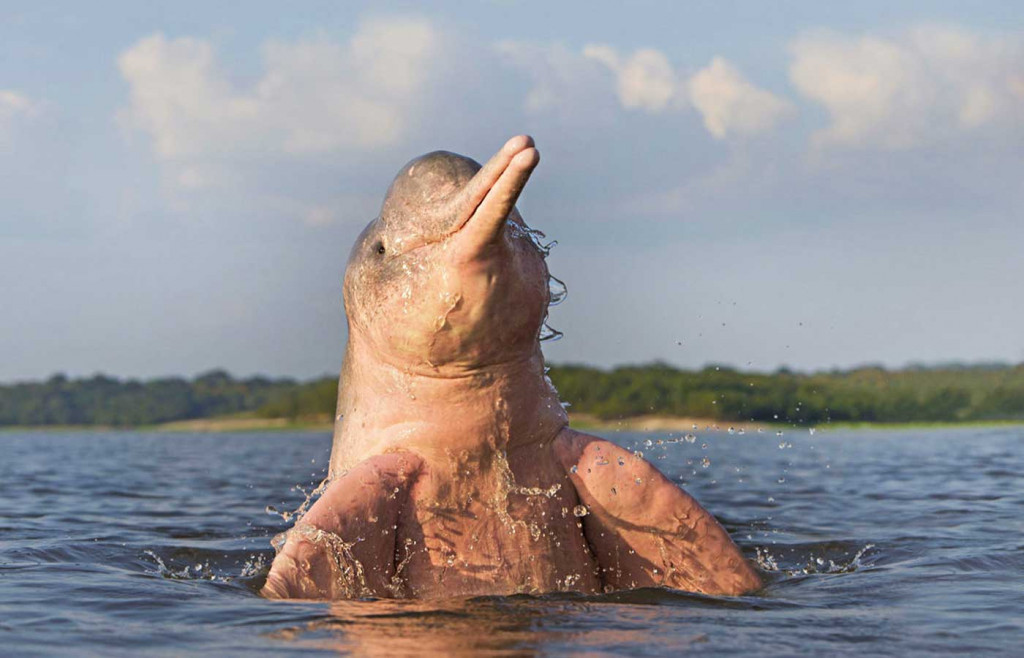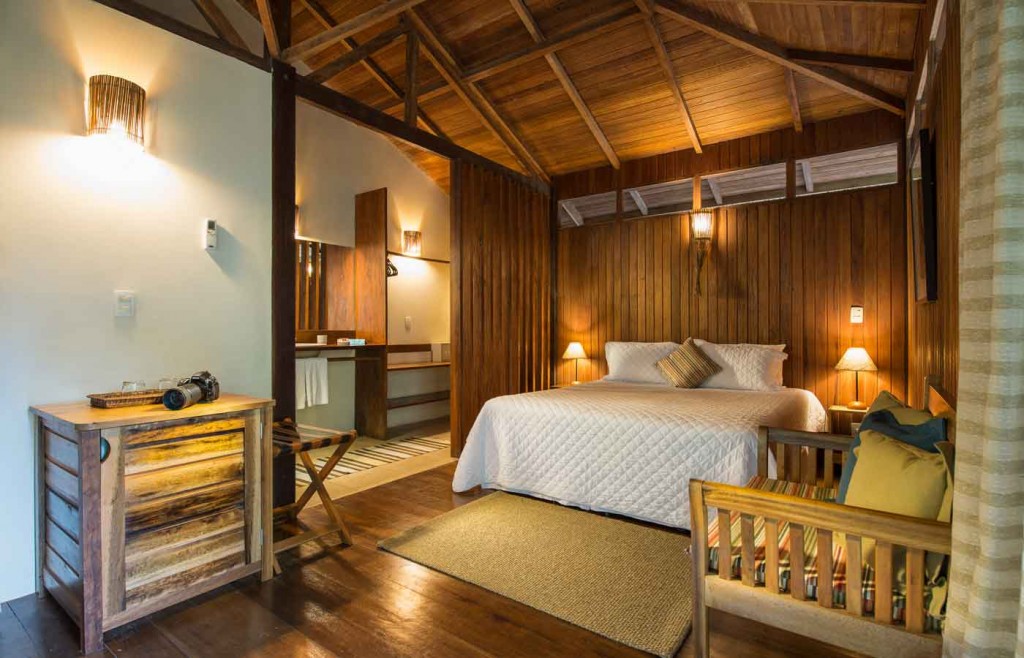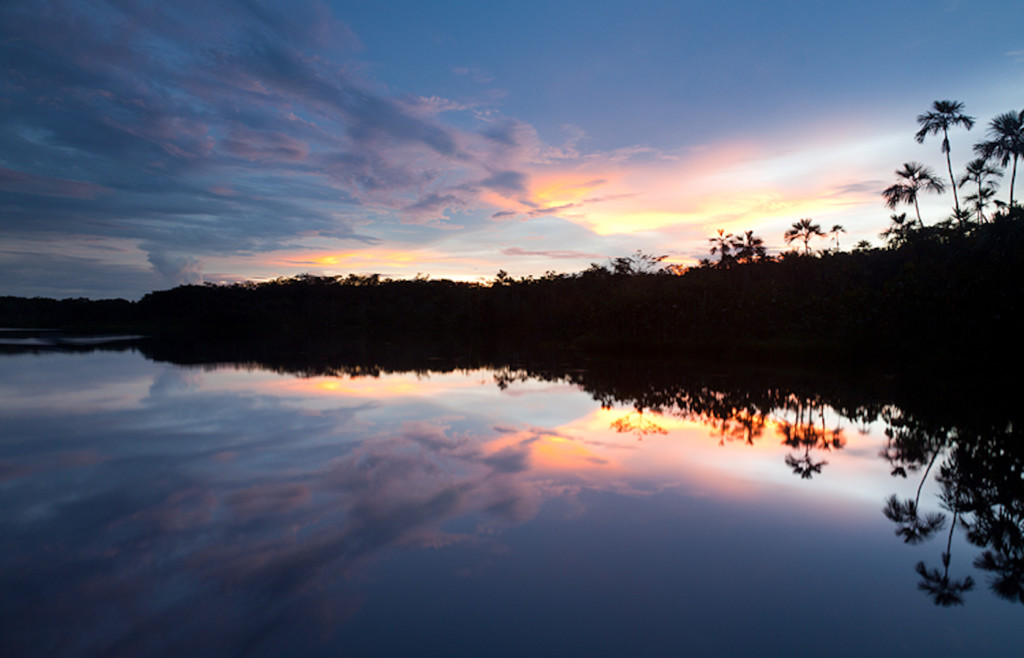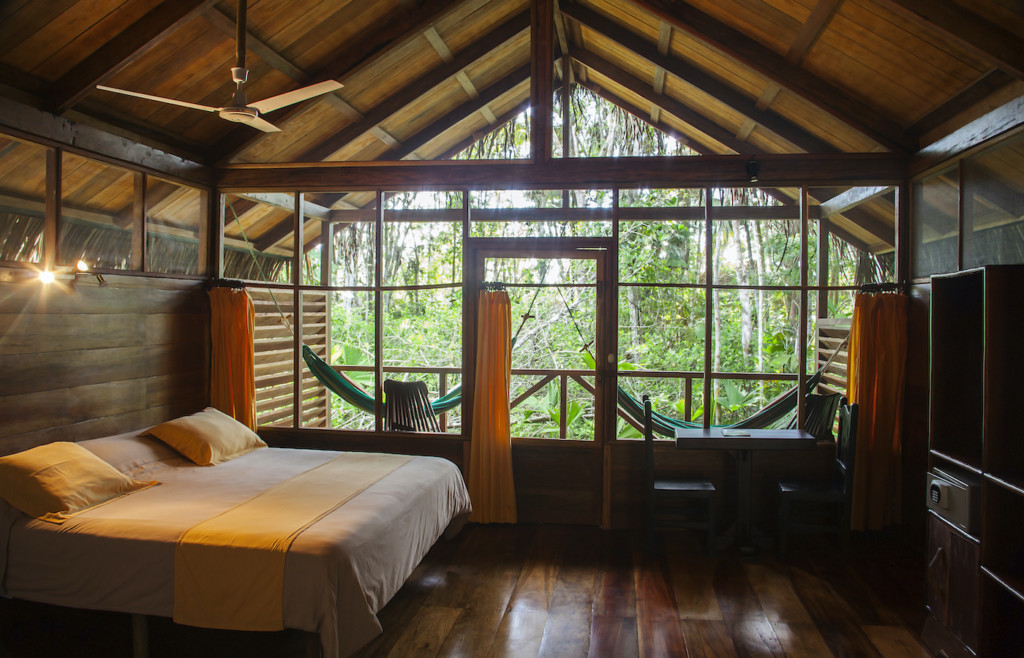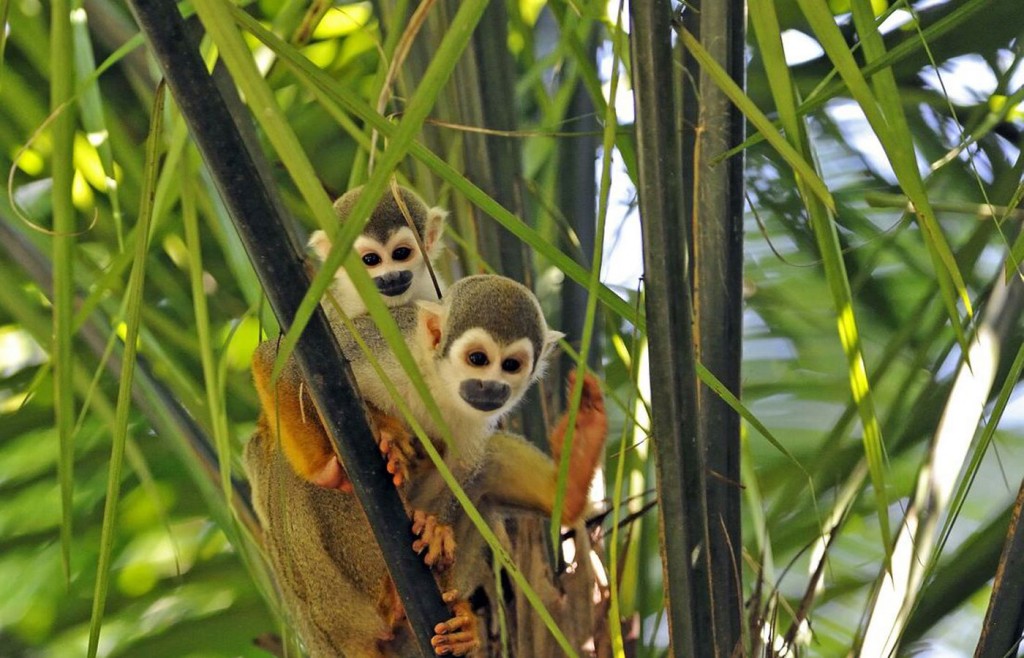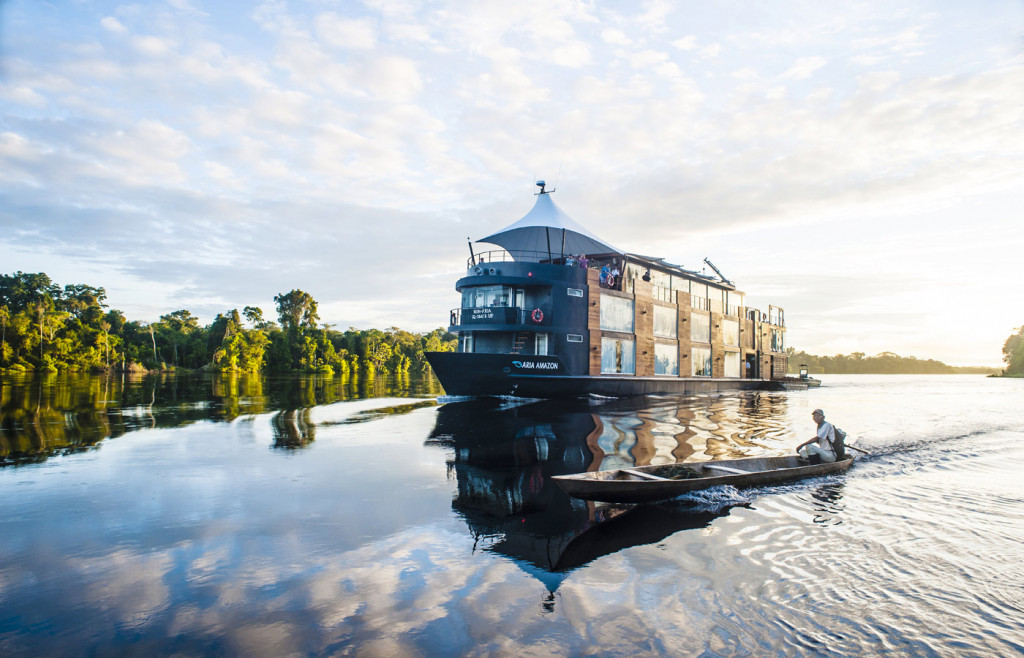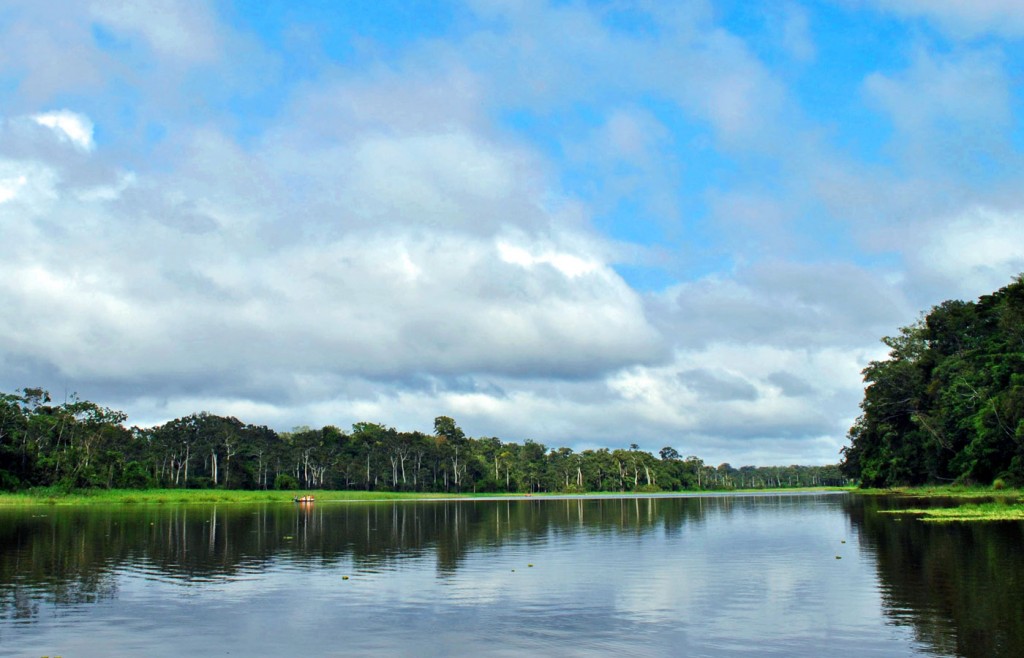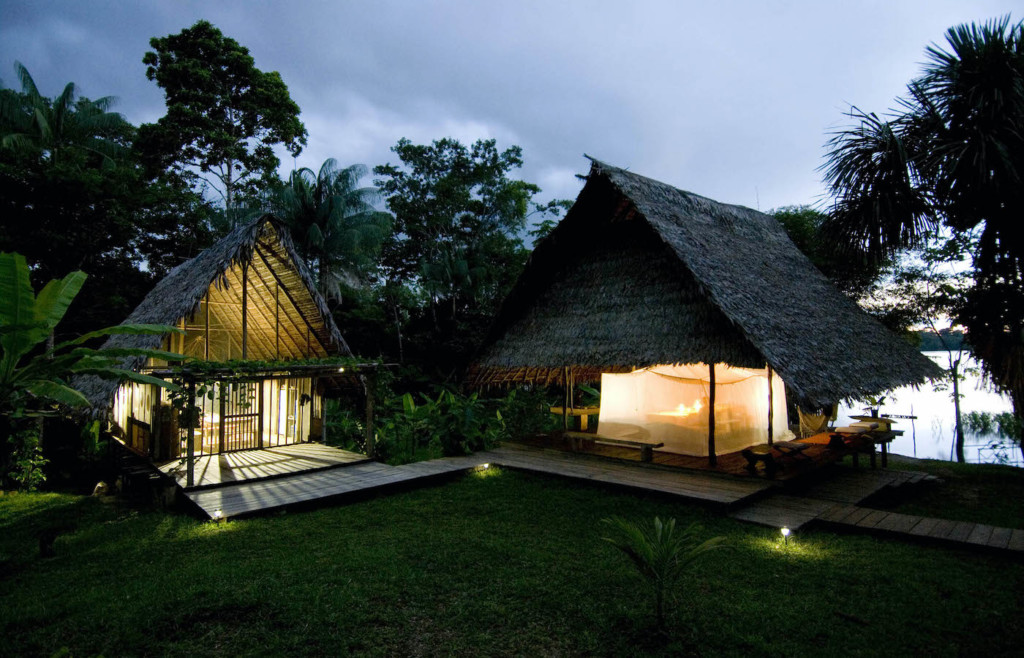Tackling the Amazon rainforest can be daunting, but it is a rewarding experience that will live in your memory forever. Humboldt specialist Clara breaks down how to fit exploring the Amazon into your next Latin America trip.
The Amazon. It is a name that conjures up so much mystery, such a magical sense of the wild unknown. The magnificent Amazon river basin and the associated tropical rainforest covers 7,000,000 km2 of surface area which extends into nine sovereign nations. The majority of this forest is in northern Brazil, as is the famous point where two major rivers (the Rio Negro and the Rio Solimões) merge to form the Amazon proper which then winds its way to the Atlantic Ocean. That being said, the Amazon and the experiences you can have exploring it, extend far beyond the borders of Brazil. Different countries offer surprisingly different experiences of the Amazon, and of course, which country you choose as your point of access makes a big difference to what kind of activities you can combine your stay in the jungle with.
Here’s my breakdown of the best places to go to visit the Amazon, and the pros and cons of each:
BRAZIL
When most people think of the Amazon, it is Brazil that comes to mind. With the lion’s share of the Amazon rainforest and the emblematic ‘Meeting of the Waters’ where the black waters of the Rio Negro and the muddy waters of the Rio Solimões run side by side without mixing for 12kms before finally merging to form the Amazon proper. Logistically, visiting the Amazon in Brazil is probably the most challenging option, but the payoff is worth it.
How Do I Get There?
The gateway city to the primary Amazon region for tourism is the tropical city of Manaus. This colourful inland port is accessible by direct flight from Brasília, Fortaleza, Rio de Janeiro and São Paulo – but be warned, the direct flight options are sometimes at awful times and indirect routes are occasionally necessary evils. The flight from Rio or São Paulo to Manaus is a whopping four hours long and this often necessitates you spending a night in the city itself before heading to your more remote jungle lodge the next morning.
There are options in the southern Brazilian Amazon, accessed through the gateway city of Alta Floresta but this is even harder to do. Alta Floresta is connected to Cuiabá in the northern Pantanal by one direct flight daily. This means that combining the northern Pantanal with the southern Amazon is a match made in wildlife heaven, but it does require a bit of commitment time-wise.
Where Can I Stay?
Our favourite lodges in the northern Amazon are the delightful Anavilhanas and Mirante do Gavião. Both of these remote lodges offer an extremely high level of accommodation and excellent Amazonian cuisine alongside a comprehensive activity package of cultural exchanges with the local communities and guided wildlife tours. In the southern Amazon, perhaps the best wildlife lodge in Brazil is the family-run Cristalino, famed for its nearby population of giant river otters. There are cruise options too, but the cosier boutique options are not the same quality as the Peruvian and Ecuadorian equivalents.
What Else Can I Do in Brazil?
For wildlife lovers, we recommend combining a lodge the Amazon with Caiman Ecological Refuge in the southern Pantanal and Pousada Trijunção in the cerrado savannahs to give yourself the best chance of observing wild jaguars and maned wolves to complement your Amazon wildlife experience. Another winning trip is combining the Amazon with Brazil’s other big hitters – Rio de Janeiro and Iguassu Falls. This tried and tested combination is a wonderful introduction to Brazil for those short on time.
ECUADOR
The main positive about a trip to the Ecuadorian Amazon is that it is simply so easy to get there. A short flight from the Andean hills of Quito and you can find yourself ensconced in the verdant nature of the Yasuní National Reserve. Beyond this, it makes sense to combine the Amazon with a trip to the Galápagos Islands, also in Ecuador, to tick off two of Planet Earth’s most incredible wildlife destinations in the same trip.
How Do I Get There?
Accessing the Ecuadorian Amazon is extremely easy. Flights from Quito, the capital city, to Francisco de Orellana, a city locally known as ‘Coca’, take around 45 minutes and there are several options per day. Helpfully the air tickets are often included in packages offered by Ecuadorian Amazon lodges, who send representatives to assist you in the airport upon arrival in Coca. Being such a quick flight is a huge positive for those who wish to fit a range of experiences into a shorter holiday. The Ecuadorian Amazon’s ease of access means that you can be in the northern Andes in the morning, and the Amazon in the evening, or begin your day in the Amazon and finish it on the Pacific Coast!
Where Can I Stay?
Most who visit the Ecuadorian Amazon opt to stay in a jungle lodge. Our favourites are La Selva, Sacha Lodge and Napo Wildlife Center. Napo Wildlife Center is the most economical of the three but is still excellent. The lodge and its associated conservation projects are spearheaded by members of the local Kichwa community, meaning that the lodge offers tourists wonderful wildlife encounters that also give back to the locals and support the local economy. Sacha is well-known for its fine cuisine and incredible complex of walkways leading to an incredible observation tower, while La Selva, perhaps technically the most luxurious of the three properties, offers suspended bridge walkways and a stunning view over Lake Garzacocha.
For those who prefer to be on the move, the MV Anakonda is Ecuador’s highest-rated luxury Amazon cruise. This cosy ship of just 18 suites gives guests the opportunity to experience a taste of up to fifteen different Amazonian communities over the course of the cruise itinerary, alongside canoe trips, jungle treks, fishing expeditions and nocturnal tours to spot lurking caiman by the riverbanks. Serving delicious fusion cuisine and providing guests with access to an observation lounge with open air Jacuzzis, this cruise is a must do for lovers of mobile luxury.
What Else Can I Do in Ecuador?
The beauty of Coca being so easily accessible is that you can combine the Ecuadorian Amazon with almost anywhere else in the country with relative ease. Good pairings include combining the Amazon with some of Ecuador’s other world-class wildlife experiences like a stay at Mashpi Lodge in the cloud forest or, of course, a stay in the Galápagos Islands.
PERU
The claustrophobic river channels of the Peruvian Amazon offer a more intimate experience of the forest than the larger rivers of the Brazilian Amazon basin. Many argue that your proximity to the low-hanging tree canopies gives you a greater chance of close encounters with wildlife amongst the foliage. Still home to caiman, pink river dolphins and a huge variety of birds – Peru’s Amazon jungle is a great option.
How Do I Get There?
Similarly to Ecuador, the Peruvian Amazon is accessed by relatively short flights from major cities, in this case Lima or Cusco. The Peruvian Amazon, however, has two access points. Those joining an Amazon cruise will head to Iquitos, in the north of Peru (accessible via direct flight from Lima), whilst those staying at a lodge will generally fly to Puerto Maldonado which is a mere 40 minutes by plane away from Cusco, but also connected by direct flights to Lima.
Puerto Maldonado is a little easier to work into an itinerary due to the fact that it is connected to both Lima and Cusco, meaning that you can begin your trip in Lima, fly to the Amazon and then continue your holiday in the Inca heartland by flying to Cusco at the end of your lodge stay.
Where Can I Stay?
The standout lodges in the Peruvian Amazon are two exquisite lodges owned by Peruvian brand, Inkaterra: Reserva Amazónica and Hacienda Concepción. Both offer a high standard of accommodation and cuisine with an excellent programme of guided activities suitable for ages to enjoy. For the more intrepid, who also have a little more time on their hands, we recommend making the journey to the Tambopata Research Center Lodge. Situated 6 hours away from Puerto Maldonado by boat, getting to this much simpler lodge is no mean feat. However, the isolated river channels and distance from any human settlement mean that big mammal sightings, including that of the elusive jaguar, are more common here.
For cruisers heading to Iquitos, Peru offers luxury options that far surpass the offering in neighbouring Ecuador and Brazil. We wholeheartedly recommend an itinerary aboard one of the Relais & Chateaux Delfín vessels, or a week-long escape abroad Aqua Expeditions’ stylish Aria. Delfín cruises offer the world-class cuisine that comes with the Relais & Chateaux mark of approval, whilst the Aria has been in such high demand that she is being joined later this year by a brand-new sister ship: Aqua Nera, launching in October.
What Else Can I Do in Peru?
What can’t you do in Peru? Peru offers some of South America’s most iconic hiking routes and one of the Seven Wonders of the World, the magical Machu Picchu. Beyond this, there’s the colonial cities of Arequipa and Cusco, the pioneering high-end cuisine of the capital Lima and no end of hidden archaeological gems. Combining a short stay Puerto Maldonado and the Amazon with a 10-day exploration of Cusco, Machu Picchu and the Sacred Valley of the Incas makes for a perfect two-week trip.
COLOMBIA
When José Eustacio Rivera, a famous Colombian novelist, wrote his masterpiece La Voraginé (The Vortex) about a hotshot chauvinist from Bogotá who elopes with his lover into the jungles of the Amazon, he perfectly captured the wonderment and terror that the depths of the forest can inspire in the souls of city-dwellers. The overwhelming silence of the day and the busy cacophony of insects and nocturnal creatures when the sun goes down is impressive.
How Do I Get There?
The easiest route into the Colombian Amazon is a direct flight from the capital Bogotá, to Leticia, in the far south of the country. This flight takes arounds two hours direct and there are usually two or three options per day.
Where Can I Stay?
This is where Colombia’s offering falls down. For years during Colombia’s civil conflict, the Amazonian regions were the territory of the FARC’s guerrilla army, regions where the central government was able to exercise little to no control. These days, with the memory of those violent times slowly fading, it means that these regions have been utterly left behind by the first waves of Colombia’s touristic boom and there are few good accommodation options here. Our favourite lodge is Calanoa. While simple, the programme of activities is immersive, and this isolated location will give more intrepid travellers that exhilarating sense of being truly out in the wild.
What Else Can I Do in Colombia?
You can do a lot. Perhaps second to the colossal Brazil, Colombia is South America’s most diverse nation. You can combine your trip to the Amazon with a safari-style exploration of the llanos orientales, tropical plains along the border with Venezuela, where you can expect to spot caiman, Orinoco crocodiles, capybara, anacondas and, if you’re lucky, jaguars. Outside of wildlife themed attractions, the trio of Colombia’s major cities: Bogotá, Medellín and Cartagena, are all utterly captivating and Santa Marta or the Coffee Region offer the perfect place for a rural wind-down.
Are you planning to visit the Amazon? Explore our sample itineraries in Brazil, Ecuador, Peru and Colombia and contact us today to begin planning your trip with one of our dedicated travel specialists.



